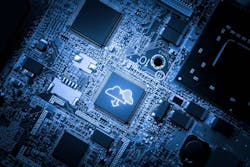Electronic design automation software supplier Mentor Graphics has been building out its embedded multicore capabilities for industrial automation over the past year with a goal of enabling connected systems. The framework, built on top of Linux and the company’s Nucleus real-time operating system (RTOS), includes scalability and security for the Internet of Things (IoT). The next step is to provide integration with the cloud.
Next month at Embedded World, the company will offer a demonstration of its embedded platforms integrated with Microsoft Azure. Using Microsoft Azure device and gateway software development kits (SDKs), Mentor Graphics will enable a direct connection between a smart device and the Microsoft Azure IoT Hub. This will enable customers who license Azure from Microsoft to benefit from a solution that is pre-integrated with Mentor’s embedded development platforms.
“I’ve talked to a lot of customers building devices and the discussion now is how to build a device as part of an IoT strategy,” said Warren Kurisu, director of product management, runtime solutions at Mentor Graphics’ embedded systems division. "This is a significant shift from the days when the discussion was just about an operating system and a board support package for a single device.”
Customers don’t always have the engineering resources required to enable device-to-cloud integration. Now they can use the Mentor Graphics pre-integrated and tested technology to focus their limited resources on building differentiated products and not on basic enablement.
“This mitigates risk and increases productivity,” Kurisu said. “And, since we understand embedded systems at the lowest levels, we can augment the customer’s data with deeply-embedded information, whether it is alarms, events or raw data, for use in analytics and business intelligence.”
Customers are becoming more interested in what’s happening with the device hardware and software—such as system memory or CPU availability, for example—in order to predict a system failure. To that end, a threshold for CPU utilization, memory, temperature, etc., could be set to send an alarm up to the cloud with a message for the operational systems. Or, if a system crashes, a core dump of device data could be sent to the cloud for analysis.
In the bigger picture, with the announcement that Siemens will complete the acquisition of Mentor Graphics early this year, the device-to-cloud offering could play directly into the Siemens cloud strategy.

